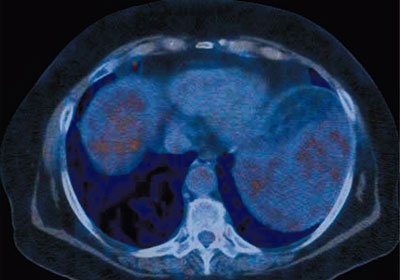Oncologic imaging innovation is enabling earlier detection of cancers
Posted: 4 February 2015 | Frost & Sullivan
Ongoing research aims to develop oncologic imaging technologies that diagnose cancer at the cellular level before the disease manifests, finds Frost & Sullivan…


Oncologic imaging is shifting away from invasive imaging to non- or minimally-invasive methods that aid real-time monitoring of tumours without damaging tissues. This trend is evident in the increased integration of oncologic imaging with other clinical tools such as in vitro tissue analysis, biomarker tests and cancer screening.
Molecular imaging, in particular, is evolving to include a variety of imaging methods that enable in vivo monitoring of cellular and molecular processes. Discovery of contrast agents is expected to further increase the effectiveness and efficacy of cancer imaging and detection.
New analysis from Frost & Sullivan, Advances in Imaging and Marker Technology for Oncology Diagnosis, finds that early diagnosis with the help of imaging has greatly reduced mortality and cancer management costs. The current focus is on developing technologies that can diagnose cancer at the cellular level, even before the diseases manifests itself.
For complimentary access to more information on this research, please visit: http://corpcom.frost.com/forms/EU_PR_AZanchi_D568_22Jan15
Nanotechnology is emerging as another area that is ideal to aid cancer imaging. Researchers are looking to develop nanoscale devices that can be conjugated with functional molecules such as tumour-specific ligands, antibodies and imaging probes for personalized cancer treatment.
“Nanoprobes, which are 100 to 1,000-fold smaller than cancer cells, can be easily transferred through leaky blood vessels,” noted Technical Insights Industry Analyst Darshana De. “They can be made to interact with targeted tumour-specific proteins both on the surface of the malignant cell or/and from inside the cancer cells.”
Oncologic imaging has also benefitted from novel nucleic acid testing solutions, gene therapies and innovative imaging modalities. However, researchers have not been able to apply these technologies optimally due to several technical issues such as the need to qualify accurate markers for each type of cancer and target the exact protein or DNA.
Over the last few years, many products have been launched in the market as both private companies and universities, in partnership with companies, have started commercialising their inventions:
- Philips Medical Systems’ Ingenia magnetic resonance radiation treatment (MR-RT), which employed the first-ever digital broadband MR
- The Centre for Probe Development and Commercialization’s (CPDC’s) 18F-Fluoroazomycin Arabinoside (18F-FAZA), a probe designed to identify hypoxic tumours
- The University of Twente’s Twente Photoacoustic Mammoscope (PAM), a device that uses sound waves instead of radiation to identify malignant tumours in the breast
- Cancer Centre at Johns Hopkins’ methylated biomarkers, (cMethDNA), a quantitative multiplexed methylation-specific polymerase chain reaction (PCR) assay for a panel of ten genes.
While scientists are developing a high number of imaging technologies, they have not yet developed a single specific platform for the detection of cancer across all types. Apart from facilitating early detection through imaging, technology developers also need to ensure that their platforms comply with strict healthcare regulations and are cost-effective.
Furthermore, over the past three decades, the industry introduced few cancer biomarkers with demonstrated clinical utility. Even biomarkers that have found application are not supported by evidence of benefit or accuracy in certain clinical settings.
“In such a scenario, public-private partnerships have enormous potential to increase research investments and maximise technology growth,” said De. “Instead of mere technology development, industry stakeholders need to incorporate non-traditional and non-healthcare disciplines into research on cancer management and treatment. These efforts will go a long way in expanding their technology footprint.”
Advances in Imaging and Marker Technology for Oncology Diagnosis, a part of the Technical Insights subscription, analyses the different technologies used in oncology diagnosis and biomarker imaging technology. Further, this research service includes detailed technology analysis and industry trends evaluated following extensive interviews with market participants. Technical Insights is an international technology analysis business that produces a variety of technical news alerts, newsletters, and studies.
Related topics
Biomarkers, Gene Testing, Imaging, Oncology
Related conditions
Breast cancer
Related organisations
Cancer Research, Frost & Sullivan








